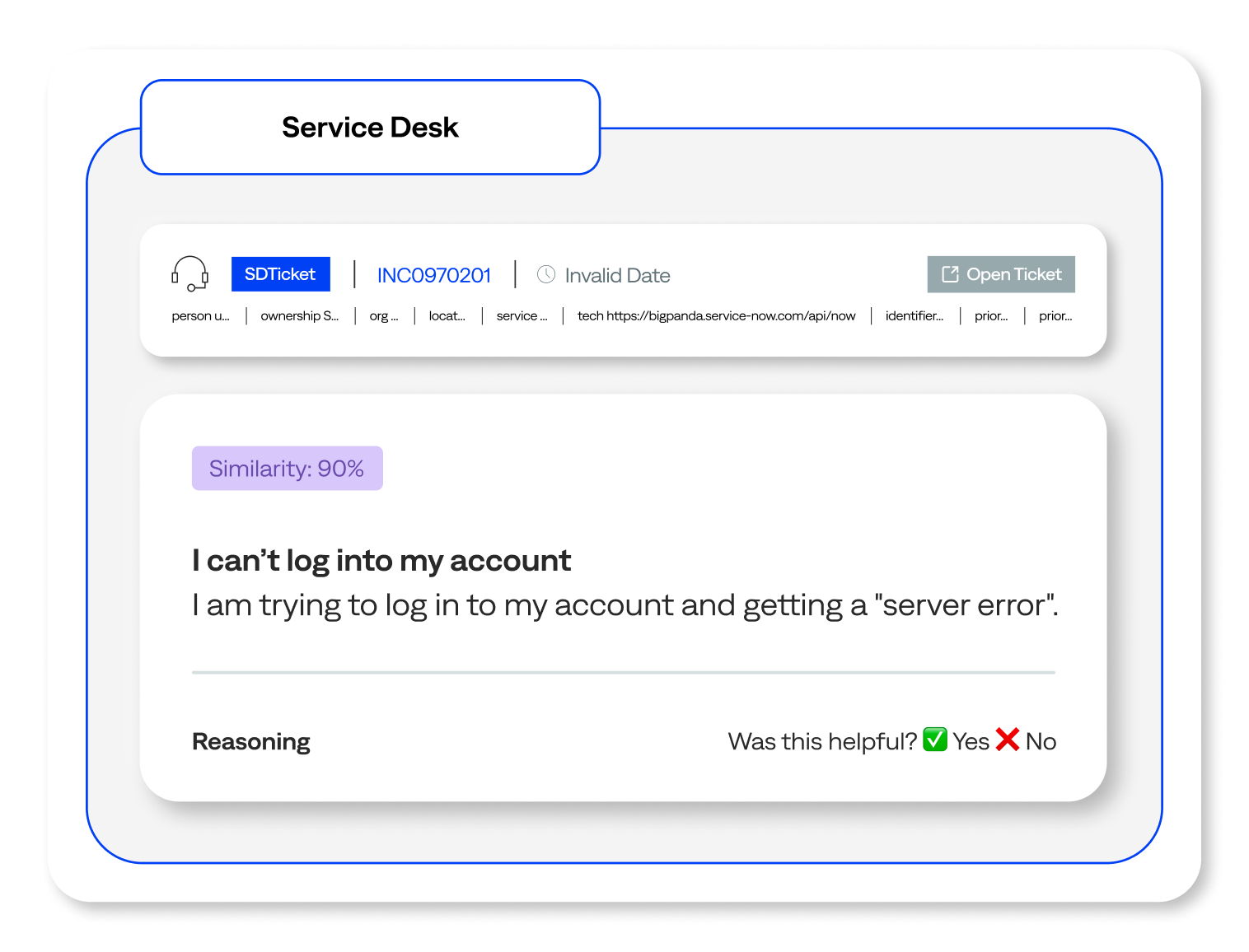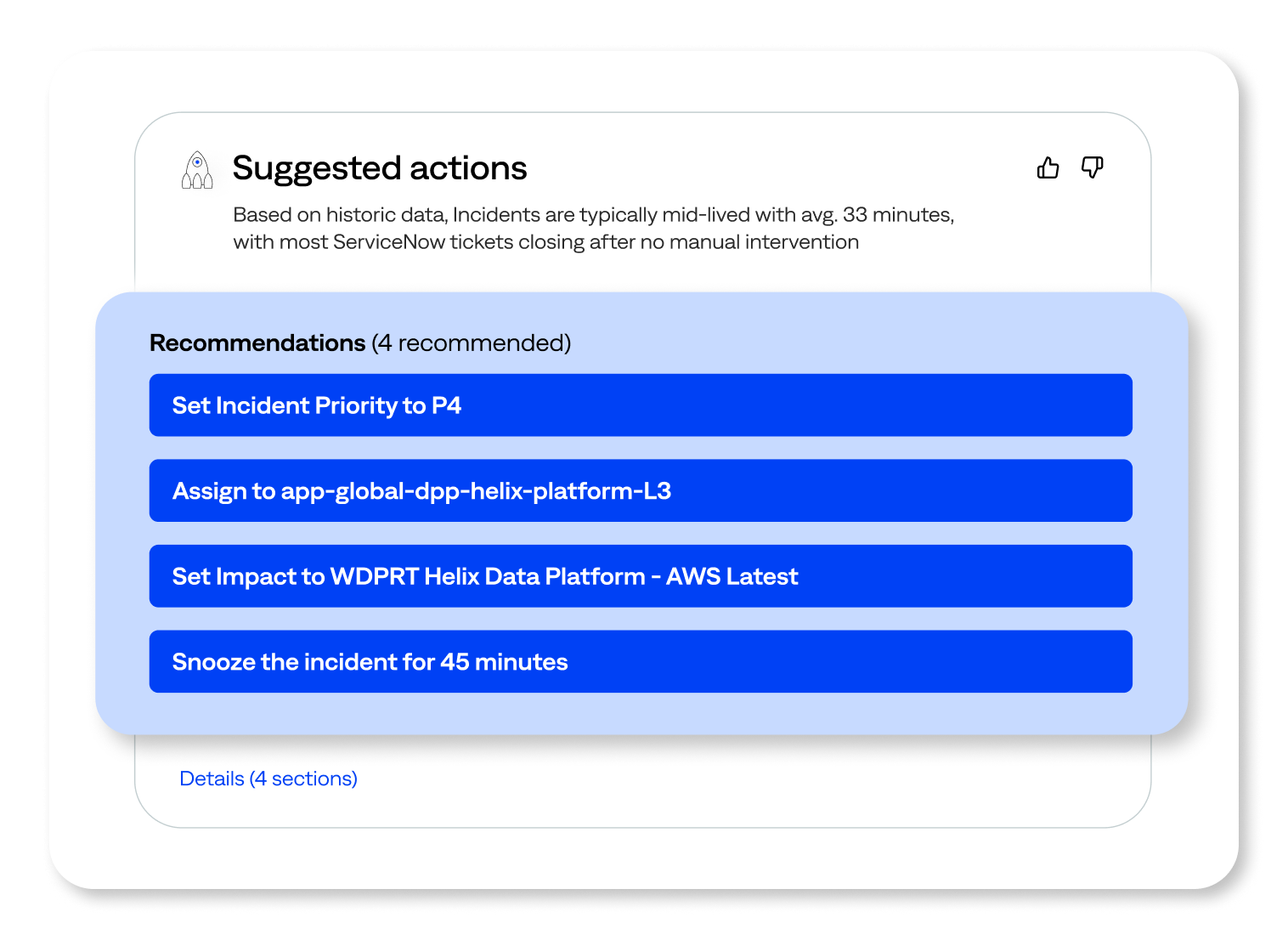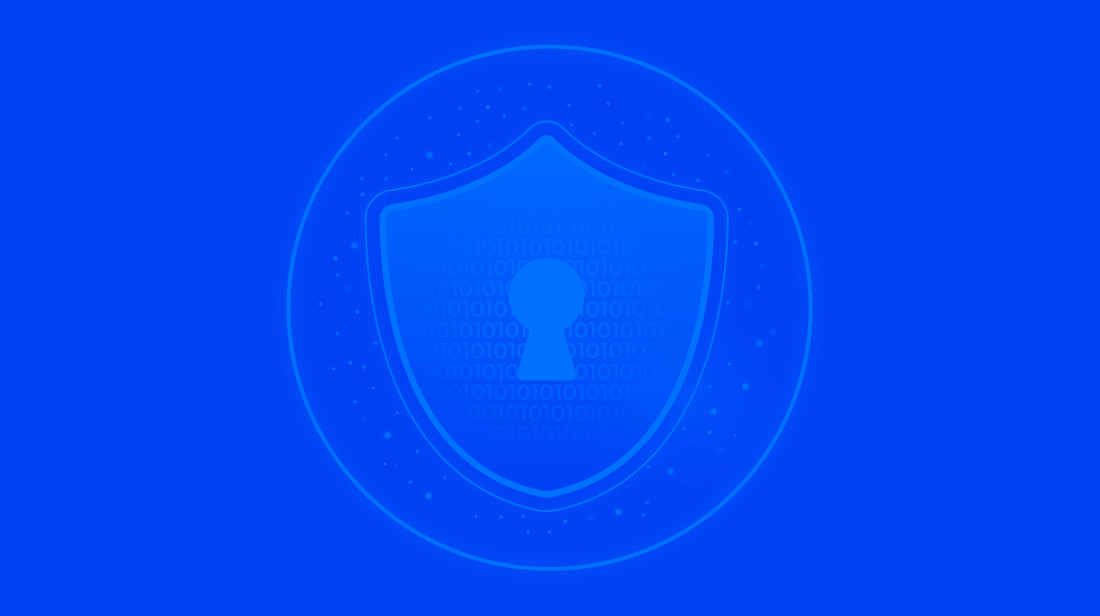Eliminate Manual L1 Workflows: BigPanda Enhances AI Detection and Response with New Features

We introduced our vision for BigPanda AI Detection and Response (ADR) at our annual customer event earlier this year, and shared how we’re going to automate L1 operations and eliminate the need for manual investigations. We’re pleased to announce the continued evolution of ADR with a brand-new set of capabilities.
IT organizations continue to be overwhelmed by the complexity of modern enterprises. In an effort to improve service reliability, teams spend billions on observability tools in the false belief that increased coverage will result in total visibility. However, despite a 20% year-over-year increase in spending, incident detection remains poor. L1 teams are still overloaded by alerts, and end-users, rather than system telemetry, still report 65% of all incidents.
L1 operators are constantly pressured to meet Service Level Agreements (SLAs), which can force them to skip crucial investigations. This reactive approach not only slows response times but also strains teams, creates redundant workflows, and increases the risk of missing important SLAs.
Agentic AI-powered IT operations offer a solution. Instead of throwing people at the problem, AI Detection and Response boosts L1 team productivity by automating detection, triage, and response with AI-driven insights and guided actions for responders.
We’re thrilled to announce a new set of features that make AI Detection and Response a reality for enterprises. These capabilities are designed to completely reimagine manual L1 workflows and help your teams achieve peak operational efficiency.
AI Detection and Response: Providing visibility for faster incident detection and response
AI Detection and Response delivers advanced observability, correlation, and automation capabilities to streamline and accelerate the manual and disjointed processes of detecting, diagnosing, triaging, and resolving IT incidents.
AI-powered event correlation identifies early signals across numerous monitoring sources to cut noise and identify critical incident patterns before they escalate. Incidents are enriched with historical and real-time operational context from runbooks, knowledge articles, and related incidents to help L1 teams diagnose incidents quickly and accurately with manual intervention. With this information, L1 operators are able to triage incidents smarter and faster, with automatically generated root cause and suggested actions.
With AI Detection and Response, IT teams can proactively identify and resolve incidents before they impact your business or customers.
Here’s a look at the new features we’re making available.
Service Desk Correlation
Network Operations Center (NOC) teams often have zero visibility into end-user tickets. End users are typically the first to report an issue when a service is interrupted, often before monitoring tools detect the problem. This creates a gap and makes diagnosing and prioritizing an incident difficult and time-consuming for L1 teams. Without a unified view, multiple teams across the NOC and the service desk could duplicate efforts on the same incident.
Service Desk Correlation bridges this gap by bringing service desk tickets directly into BigPanda incidents. This new capability automatically correlates key data, like priority and impact, with BigPanda Incidents, giving your NOC teams a complete view of the impact on end-users. This helps L1 teams quickly identify high-priority incidents and understand which teams should be involved. Providing clarity on who is already working on an issue helps eliminate duplicate workflows and reduces the amount of noise from unnecessary service desk tickets.
Service Desk Correlation can even discover new telemetry data that may not be coming into BigPanda but is showing up in service desk tickets, providing greater visibility to the NOC.
Suggested Actions and Historical Incidents
When investigating an incident, operators often struggle to find previous related incidents or review the actions taken during those past events. L1 operators face short SLAs and typically lack the time and institutional knowledge to manually search through incident records in IT Service Management (ITSM) tools. This manual process requires them to know precisely what they are looking for and how to write complex queries to find it.
Operators need a quick way to determine whether an incident has occurred before, when it happened, who was responsible, and how the incident was resolved.
The new Suggested Actions feature provides clear, direct, and concise steps for L1 operators. It leverages historical incident data from your ITSM platform to identify similar historical ITSM incidents and provides L1 teams with greater visibility.
This feature goes further by offering operators specific actions to resolve or escalate the incident to the appropriate team. Suggested Actions delivers actionable intelligence directly to L1 operators, enabling them to assess situations and determine their next steps quickly, allowing them to act more efficiently and accurately.
A cohesive workflow: The power of collaboration
Together, Service Desk Correlation and Suggested Actions deliver a powerful, intelligent workflow to help L1 operators diagnose, triage, and respond to incidents.
Imagine the following scenario: an online payment processing service is experiencing an issue. The first sign of trouble isn’t an alert from a monitoring tool, but a sudden spike in end-user complaints submitted to the service desk about failed transactions.
- Service Desk Correlation immediately correlates these tickets to an existing BigPanda Incident, providing a single, enriched incident. This provides the NOC team with immediate visibility and helps them prioritize the incident based on end-user impact.
- Operators don’t have to guess during their investigation. Suggested Actions automatically scan ITSM data for similar failed transaction outages and present L1 operators with a summary of past incidents, including who owned them.
- Operators automatically get a clear, concise, and direct recommendation to escalate to the “Payment Gateway Team,” who owned and resolved the last incident.
This cohesive workflow ensures that your L1 teams have the information and context to resolve incidents faster and more efficiently than ever.
These new features are designed to reduce human costs and time and keep your teams focused on high-priority incidents, not firefighting. See for yourself how BigPanda empowers your L1 teams to triage, respond, and escalate with speed and confidence.
Are you ready to transform your L1 operations from a reactive, manual workflow to a more intelligent, autonomous system? Book a demo today to learn more.






